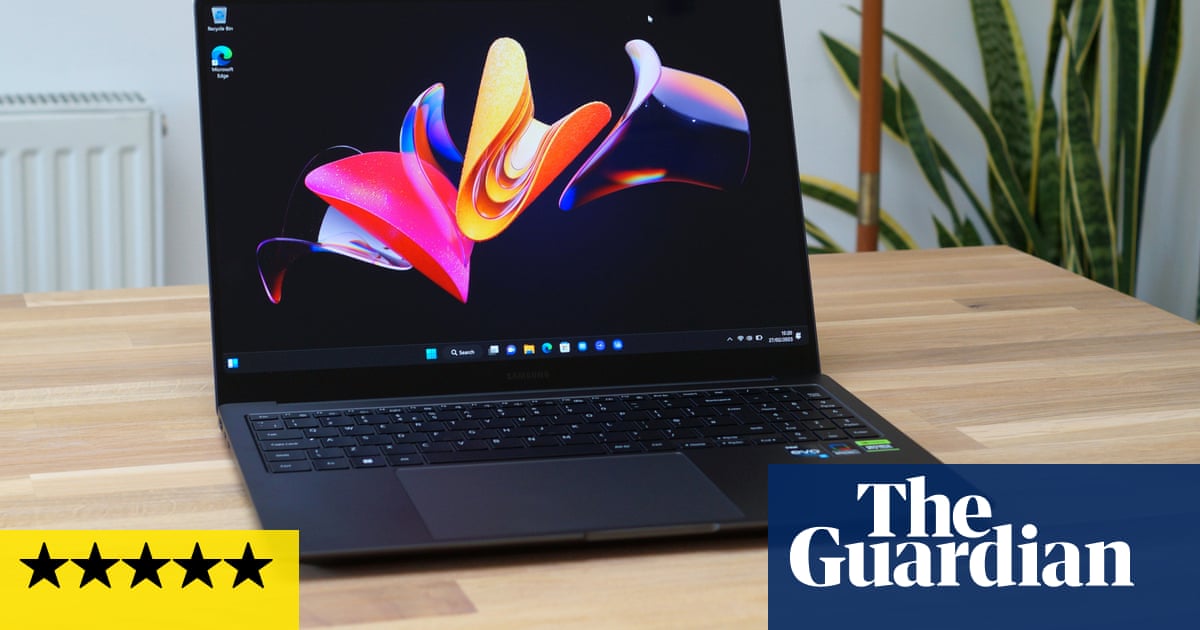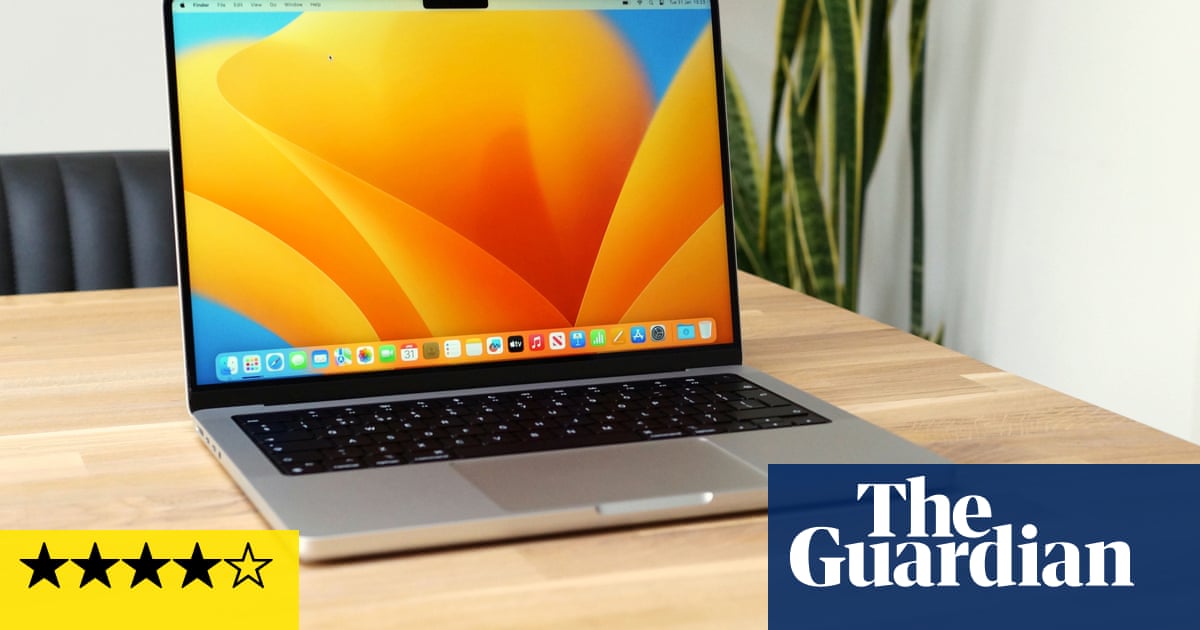
he Samsung Galaxy Book S is no ordinary laptop as it contains one of Intel’s brand new “hybrid” processors designed to give PCs smartphone-like battery life while running regular Windows 10.
The Book S follows the Book Flex in Samsung’s return to the UK PC market, but is confusingly available in two versions both costing £999: the Galaxy Book S Intel (as reviewed here) and the Galaxy Book S Qualcomm, which is slightly older and has a completely different type of chip.
The Book S Intel looks like a fairly standard Windows 10 laptop, except it is super thin and light at just 11.8mm thick and 950g in weight. For comparison, the Book Flex is 1.16kg and 12.9mm thick, while the Apple MacBook Air is 1.29kg and 16.1mm thick.
The backlit keyboard is good, with well-spaced, responsive keys with enough travel – how far down it pushes – for most. The trackpad is wide and precise, but makes quite a loud click when depressed.
There’s a small fingerprint sensor embedded in the power button in the top right of the keyboard, which is a much more sensible position than taking up half the shift key, as was the case with its sibling.
The 13.3in full HD touchscreen is good, but not quite as colourful and vibrant as the Book Flex, covering only 80% of the DCI-P3 colour palette. It can get super bright with a dedicated outdoor mode that boosts the brightness from 350nit to 600nit, making it easier to see in sunlight. The model tested lacked automatic brightness control, but just setting it to 70% brightness worked well in most scenarios.
The screen is noticeably less crisp than higher-resolution rivals, and being in the 16:9 ratio (matching your TV) means there’s less vertical space to work with. I found myself scrolling up and down a lot more than I would on taller screens with 16:10 or 3:2 ratios.
Specifications
Screen: 13.3in FHD (1080p) LCD touchscreen (166PPI)
Processor: Intel Core i5-L16G7
RAM: 8GB
Storage: 512GB
Graphics: Intel UHD
Operating system: Windows 10 Home
Camera: 1MP
Connectivity: Wifi 6, Bluetooth 5, 2x USB-C, microSD, headphones
Dimensions: 203.2 x 305.2 x 11.8mm
Weight: 950g
Hybrid Intel chip
For some time ARM chips, such as those running in all smartphones, have promised to deliver better battery life and similar performance than the Intel processors used in almost all laptops. They haven’t yet delivered on that promise in Windows computers, but it hasn’t stopped Intel designing chips in a similar way to ARM models in an attempt to head off the competition.
The Intel Core i5-L16G7 running in the Book S is one of the firm’s first to try a so-called big.Little design. What that means in English for this particular model is that you have one, high-power processing unit paired with four smaller, lower-power and lower performance units on one chip.
The idea is that the lower power cores handle the simple things, and the high-power core handles the important things. The reason you have this sort of design is that for simple things the chip consumes less power than the equivalent standard dual or quad-core chip, but it still has the poke to do heavy lifting when required. It also means this machine is fanless, relying entirely on passive cooling, and making operation totally silent.
In reality the Book S has very mixed performance. When you’re doing too much the laptop really bogs down, feeling slow and ponderous. It was particularly noticeable when first setting up the machine, performing updates and downloading apps – a similar thing occurred with the Core i3 processor in the latest MacBook Air.
Once setup was complete, if I wasn’t running any updates, performance was pretty good. On a par with most regular laptops, handling Chrome, Windows Mail, Evernote, Nextgen Reader and a bunch of chat apps just fine.
It started to come unstuck when I opened a couple of fairly large photos in Affinity Photo. It managed the photo manipulation tasks OK, but was fairly slow doing it. It also struggled a little here and there when I connected it to an external 4K monitor and went into total meltdown when I attempted to open a spreadsheet while holding a Google Meet.
But that isn’t the point of this laptop. It’s designed to be used as a light-work laptop that lasts a long time between charges. When used this way with all the apps open as above it lasts comfortably over 10 hours between charges, which is long by most laptop standards, although beaten by an hour by the Book Flex.
Charging the laptop with the included tiny 25W USB-C charger takes 2.5 hours from dead, reaching 50% charge in an hour, which is pretty slow so it might be worth buying a more powerful power adapter. The Book S has two USB-C ports, one each side, and a headphone socket on the left. There’s a microSD card slot hiding in a small pull out tray on the left too.
Sustainability
The Book S can generally be repaired by authorised service centres. Samsung rates the battery for at least 1,000 full charge cycles while still maintaining at least 80% capacity. Samsung also has battery lifespan-extending options on the laptop, such as those that limit the maximum charge to 85% to prolong its useful life.
The battery can be replaced out of warranty by authorised service providers. The laptop is not made from any recycled materials and while Samsung does offer trade-in and recycling schemes for other devices, it does not do so yet for laptops.
Windows 10 Home
The advantage the Book S Intel has over ARM-based laptops, such as the Surface Pro X, is that it ships and runs regular Windows 10 Home and therefore any standard Windows app.
At the time of writing, the Book S has still not received the May 2020 Windows 10 feature update, as there are some incompatibility issues for Microsoft to solve.
There was some unwelcome pre-installed software, including McAfee LiveSafe, Clonix RansomDefender and the usual Candy Crush Friends and Farm Heroes Saga, which I uninstalled on first use.
Price
The Samsung Galaxy Book S Intel costs £999 with 8GB of RAM and 512GB of storage in either grey or gold.
The Galaxy Book S is also available in a Qualcomm version with an ARM chip for £999.
For comparison, the Samsung Galaxy Book Flex costs £1,349, the Microsoft Surface Laptop 3 costs from £999, the Dell XPS 13 costs from £1,399 and the Apple MacBook Air costs from £999.
Verdict
The Samsung Galaxy Book S is a sleek laptop with a new type of processor that is neither a home run nor an abysmal failure.
It was disappointing to see a £999 laptop struggle with updates and video conferencing, but outside of those higher-demand tasks, performance was pleasingly snappy. Battery life was also very good for a laptop this thin and light with a relatively small capacity battery, and without the compromise in app compatibility that an ARM chip imposes. Therefore it’s not a bad start for the Core i5-L16G7, the first of Intel’s hybrid chips.
The keyboard is good, the trackpad too. The fingerprint scanner is in the right place. Two USB-C ports are welcome, as is microSD card support. The screen is good and the outdoor brightness mode really does make a difference.
The Book S is therefore better thought of as a good road-warrior’s laptop. One that can easily be packed, lasts a long time and gets the basics done with the minimum of fuss, just don’t expect it to be a premium power laptop. Whether anyone actually wants a road-warrior laptop in the current pandemic remains to be seen.












